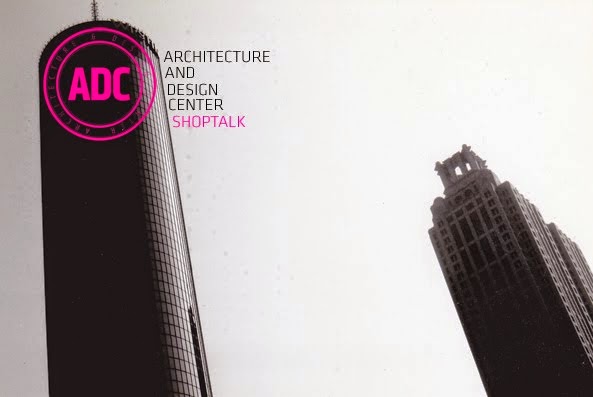Central to an architect's, or any designer's, job is solving
complex problems. It's not possible to solve these problems through analytical
methods, so Architects have come up with multiple subjective, or intuitive,
ways of solving them. One of which is to simply draw on experience. "Well
in the past, in a similar situation, this worked. Let's try it again and see
what happens."
Where experience fails, architects can fall back on precedence.
The work of others in similar situations. Throughout the centuries architects
find themselves over and over again going back to certain buildings by certain
architects. These architects and these works form a set of building blocks from
which each architect can build his or her own design philosophy.
They also form the basis of a sort of short hand architects
use when talking to each other. They might say, "It's very Mesian, or
Wrightean" or "It's very Bauhaus"
To hopefully help listeners understand what we are talking
about when this happens, David Rader and I are going to undertake a special
sub-series in which we look at a survey of important architects and works that
make up the mental background of most modern architecture practices. It's not
an exhaustive survey. It's a bare- essentials for anyone who wants to be
relatively fluent in architect-ese.
From time to time David and I will look at a well known
building by a well known architect that still has a major space in architecture
culture. Where possible we'll look at a building David and/or I have been to in
person because no matter how much you study a building, seeing it in person is
always surprising. We'll cover the people involved, the Architect and the
Client. The reason the building was built and a little about the times in which
the building was built. We'll go over some of the distinct, unique, and
influential elements of the building or work. and we'll wrap up with why the
building is important and give our own critique of the building. There's a lot
to be gained by tearing down giants, or at least chipping away at them.
See our initial list below and feel free to suggest buildings and architects we may have missed. Heck, tell us there are some we should cut.
| Building/Work |
Architect/Autor |
Year |
| Parthenon |
Iktinos, Kallikrates,
Phidias |
-447 |
| Ten Books of
Architecture |
Vitruvius (Marcus
Vitruvius Pollio) |
0 |
| Foundlings
Hospital |
Brunelleschi, Filippo |
1419 |
| Pazzi Chapel |
Brunelleschi, Filippo |
1430 |
| Duomo |
Brunelleschi, Filippo |
1436 |
| On the Art of
Building |
Alberti, Leon Batista |
1452 |
| La Tempietto |
Bramante, Donato |
1502 |
| Palazzo della
Ragioine |
Paladio, Andrea |
1546 |
| Villa Barbaro |
Paladio, Andrea |
1560 |
| Villa Rotunda |
Paladio, Andrea |
1566 |
| Stourhead |
Varuious |
1719-1764 |
| Royal
Saltworks Arc-et-Senans |
Ledoux, Claude
Nicolas |
1778 |
| University of
Virginia |
Jefferson, Thomas |
1825 |
| Panopticon |
Bentham, Jeremy |
1791 |
| Bibleotheque
Ste Genevieve |
Viollet-le-Duc,
Eugene Emanuel |
1845 |
| The Seven
Lamps of Architecture |
Ruskin, John |
1849 |
| Notre-Dame
Paris |
Labrouste, Henri |
1850 |
| Crystal Palace |
Paxton, Joseph |
1851 |
| Eames Lounge
Chair |
Eames, Charles and
Ray |
1956 |
| Entretiens sur
l'architecture |
Viollet-le-Duc,
Eugene Emanuel |
1872 |
| Opera Paris |
Garnier, Charles |
1875 |
| Marshal Field
Wholesale Store |
Richardson, Henry
Hobson |
1885 |
| The Wainright
Building |
Sulivan, Louis;
Adler, Dankmar |
1891 |
| Reliance
Building |
Root, John |
1895 |
| Paris Metro |
Guimard, Hecotr |
1900 |
| Unity Temple |
Wright, Frank Lloyd |
1906 |
| Robbie House |
Wright, Frank Lloyd |
1909 |
| AEG Turbine
Factory |
Behrens, Peter |
1909 |
| Citta Nuova |
Sant'Elia, Antonio |
1914 |
| Glass
Skyscrpaer |
Mies van der Rohe,
Ludwieg |
1920 |
| Schroder House |
Rietveld, Gerrit |
1924 |
| Bauhaus |
Gropius, Walter |
1926 |
| Lenin
Institute |
Leonidov, Ivan |
1927 |
| Towards an
Architecture |
Le Corbusier |
1927 |
| Barcelona
Pavilion |
Mies van der Rohe,
Ludwieg |
1929 |
| Villa Savoy |
Le Corbusier |
1931 |
| Viipuri
Library |
Aalto, Alvar |
1935 |
| Casa Del
Fascio |
Terrangni, Giuseppe |
1936 |
| Falling Water |
Wright, Frank Lloyd |
1936 |
| Eames House |
Eames, Charles and
Ray |
1949 |
| Farnsworth
House |
Mies van der Rohe,
Ludwieg |
1950 |
| Unite
d'Habitation |
Le Corbusier |
1952 |
| Notre-Dame-du-Haut,
Ranchamp |
Le Corbusier |
1955 |
| Seagram
Building |
Mies van der Rohe,
Ludwieg |
1958 |
| Guggenheim
Musum |
Wright, Frank Lloyd |
1960 |
| TWA Terminal |
Sarrinen, Eero |
1962 |
| Fondazione
Querini Stampalia |
Scarpa, Carlo |
1963 |
| Kimble Art
Museum |
Kahn, Louis |
1972 |
| House VI |
Eisenman, Peter |
1975 |
| The Pompidou
Center |
Pian, Renzo; Rogers
Richard |
1977 |
| Delirous New
York |
Koolhaas, Rem |
1978 |
| High Museum of
Art |
Richard Meier |
1983 |
| Menil
Collection |
Pian, Renzo |
1986 |
| Hongkong and
Shanghai Bank |
Foster, Norman |
1986 |
| Pyramid de
Musee de Luvre |
Pei, I.M. |
1989 |
| Buckhead
Branch Library |
Scogin, Mack; Elam
Merrill |
1989 |
| Michael C.
Carlos Museum |
Graves, Michael |
1993 |
| Guggenheim
Museum Bilbao |
Gehry, Frank |
1997 |

























